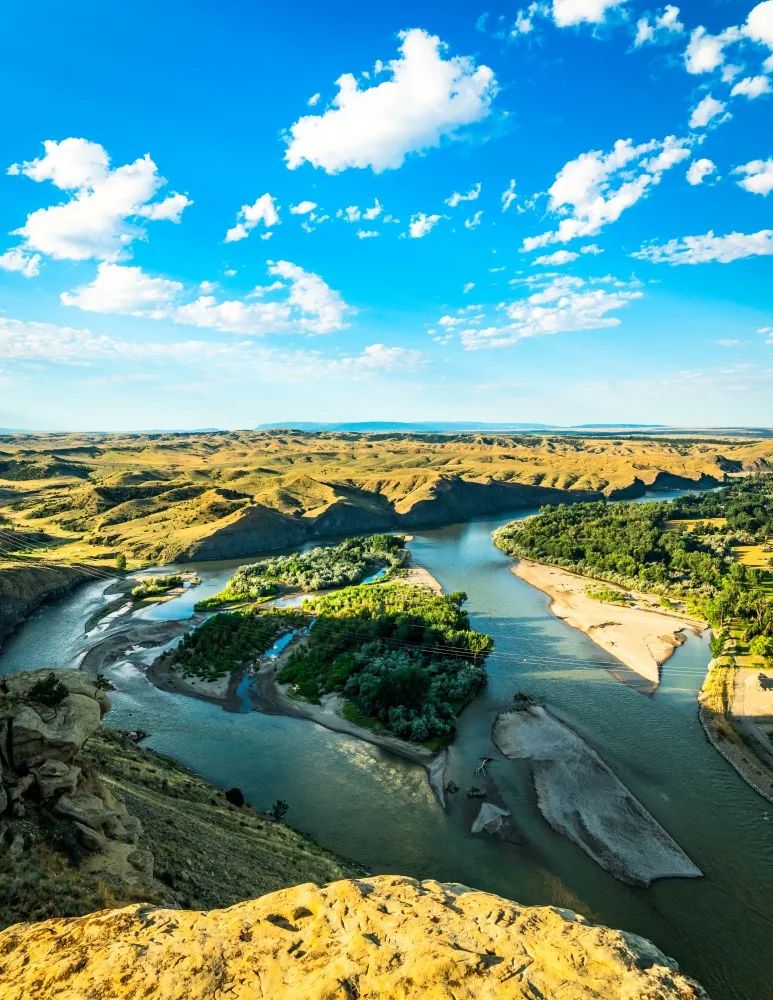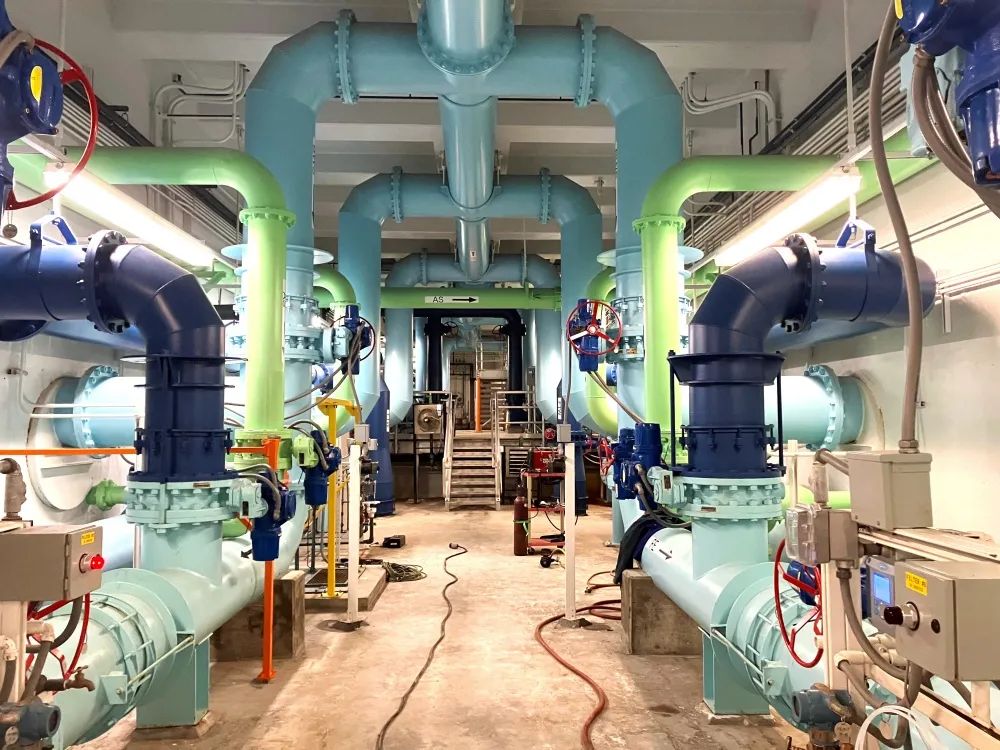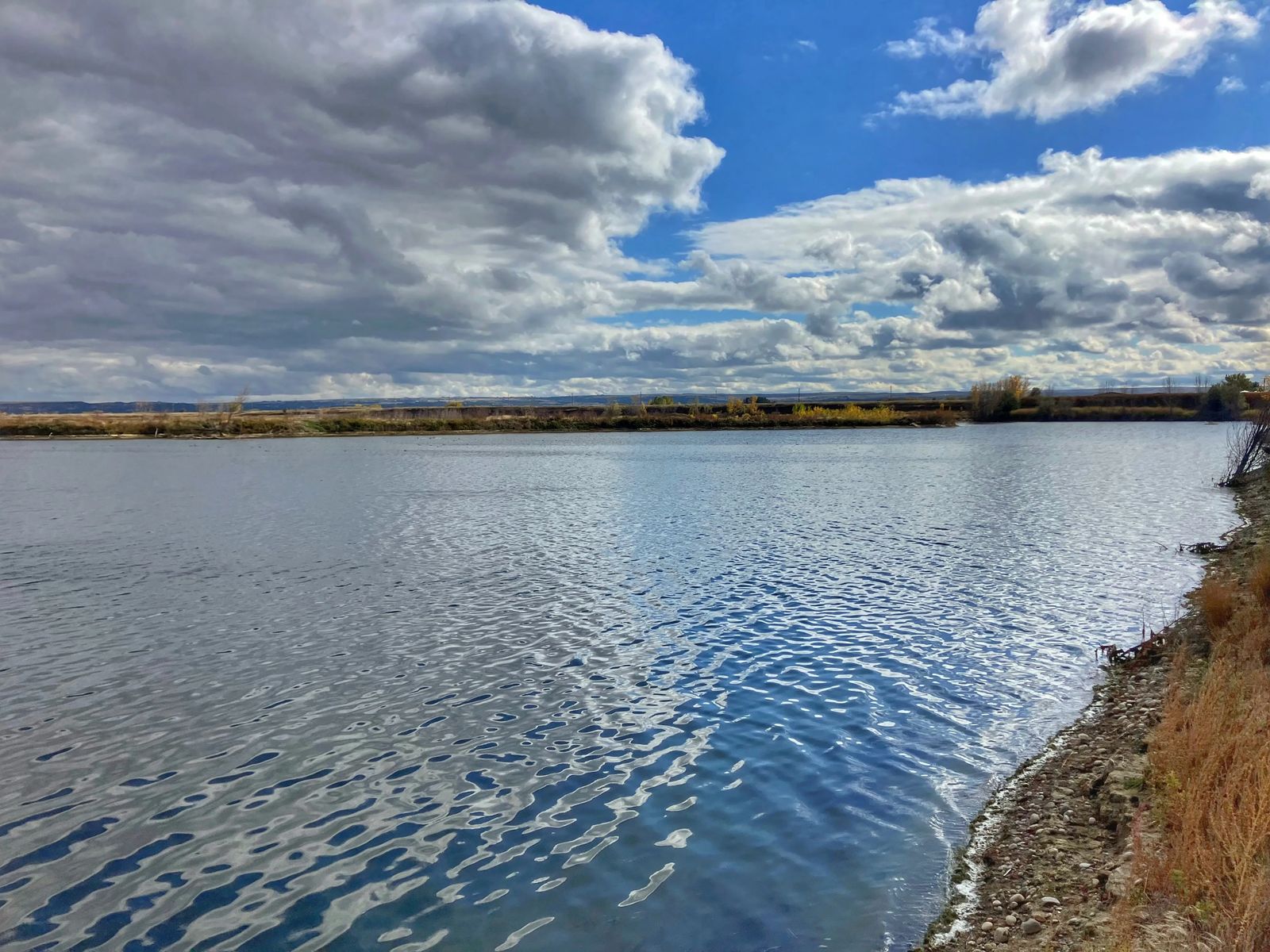
photo by Seth Kroft
Clean Water Matters: Making the Most of a Precious Resource
April 2024
by anna rogers
A satellite image of Earth gives an accurate picture of our incredible planet. Seeing all that blue, we can assume that Earth is mostly water – 71% of it, to be exact. According to NASA, the total water is estimated to be around 370 quintillion gallons.
Of all that water, only 3% is freshwater.
Out of that available freshwater, 69% is locked up in glaciers and frozen ice caps.
Less than 1% of all water is available as freshwater for humans, making it a precious resource that is often taken for granted.
The total amount of water on Earth is fixed. It continuously cycles through the water cycle - changing in form but never quantity. What has changed on Earth is the water demand.
In the United States, 59% of our water usage is attributed to industry and 33% to agriculture. Domestic use of water makes up only 8%. This includes watering lawns, flushing toilets, doing laundry and dishes, bathing, and drinking. This water comes from rivers, lakes, reservoirs, and groundwater in aquifers.
Clean water is the elixir of life. With a finite amount of water serving the needs of a growing number of people, how we approach our water usage requires strategy and innovation. Billings is no different, and plenty is going on right here in the city limits to tackle and address the issue and privilege of clean water.
Water In, Water Out
The human body is, on average, 60% water. Healthy individuals should drink around 9 to 13 cups of water daily to keep the body properly hydrated (these amounts vary based on age, gender, and other factors). Water intake enables our bodies to regulate temperature, lubricates and cushions our joints, enhances energy and brain function, and aids in the removal of waste. Simply put, the water we put into our bodies matters.
In Billings, all the water we use comes from and goes back into the Yellowstone River. This lifeline of many peoples of the past remains our sustaining force today. It’s a privilege to draw on the last major undammed river in the contiguous United States. But it’s also a big responsibility to care for its waters and all the life it supports and maintains.
Clean water in and clean water out is necessary for our bodies and our natural world. “Billings has dedicated teams of engineers, operators, electricians, programmers, laboratory professionals, mechanics, and support staff that work diligently to ensure that every drop of water that reaches each tap is of the highest quality,” says Louis Engels, Utilities Systems Engineer for the City.
“The work doesn’t stop at the tap. We continue by ensuring that every drop of water that returns to the Yellowstone River is treated by our award-winning Water Reclamation Facility. This ensures downstream users and wildlife have the same access to clean water that we enjoy here in Billings.”
Inner Workings

Photo of existing water treatment plant courtesy of Billings Public Works
What exactly is happening in Billings to bring water to the valley’s residents and return it thoughtfully and safely to the river?
Many checks and balances are in place, with tests run in real-time and thorough audits done monthly and annually.
“To ensure that every drop is safe, we do approximately 800 tests for hundreds of contaminants every month with our in-house certified laboratory. We check these against the requirements of the Safe Drinking Water Act set by the EPA and enforced through the Montana DEQ.” Engels emphasizes that they are required annually to prepare and distribute consumer confidence reports that include information about detected contaminants and whether a contaminant limit was exceeded. “These tests are in addition to the hundreds of real-time instruments that notify our operators of any changes in water quality through our automation system,” Engels says.
Until now, Billings has operated with only one water treatment plant. This plant produces about 60 million gallons of water a day. For a city that uses 56-57 million gallons per day in the summer months, that was too close to capacity for comfort. The city needed a new water treatment plant.
Billings’ Water Reclamation Facility project has been one of the largest public works projects in the city’s history, with a projected cost of $250 million. The city saved roughly $200 million on the project by repurposing existing facilities and utilizing a new concept. The city now uses UV light instead of chemicals to disinfect the water that returns to the Yellowstone, implementing several new processes to remove nitrogen and phosphorous.
HDR, Inc., who worked on this project locally, says on their website: “The successful project resulted in the city meeting their permit limits for nitrogen and phosphorus in the first month the permit became effective and a total 97% reduction in overall phosphorus discharge, which in turn helps keep the Yellowstone River one of the world’s greatest trout streams for decades to come.” The project won multiple awards for its innovation.
Future Growth
What can we expect as Billings continues to grow?
“Billings is blessed to have sustained growth rather than boom and bust cycles that other communities often experience,” Engels says. “This allows us to provide better-planned facilities and be more cost-efficient by bringing new assets online only as they are needed.
We have invested heavily in asset management for the Public Works Department to ‘make the right investment, in the right asset, at the right time,’ which is the motto of our asset management program. This ensures that we get the most out of our existing assets and allows us to get greater capacity and efficiency out of the existing water treatment plant, as an example.
The West End water treatment plant will be coming online just in time to ensure we can continue providing enough drinking water to sustain our growth. The City has done an excellent job securing water rights that will allow us to double or triple in population while still providing the same level of water security that we enjoy today.”
West End Reservoir Update from Louis Engels

West End Reservoir Project rendering courtesy of Billings Public Works
The West End Reservoir project encountered budgetary challenges due to the COVID-19 pandemic and subsequent inflationary challenges in the construction industry. This created the necessity to make changes in the pipeline delivery, intake location, reservoir size, and configuration.
The reservoir project goes hand-in-hand with the water treatment plant project, which we are proud to announce broke ground in March. The reservoir project itself is continuing to proceed with detailed design. We anticipate a construction contract to be signed this summer, with groundwork beginning soon after.
There is always a lot going on in the Public Works Department! We work to ensure that we are taking care of what the public has trusted us with, planning for the future, and protecting the environment. Viewing our capital improvement plan sheds light on where we are making our investments to keep our community thriving. This plan is accessible to the public on the city website: billingsmt.gov.
Originally printed in the April 2024 issue of Simply Local Magazine
Never miss an issue, check out SLM's digital editions here!





